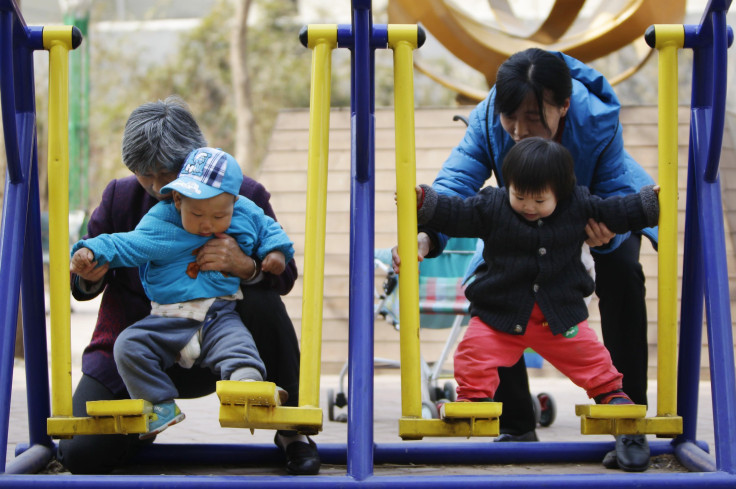19 Chinese Provinces Remove Mandatory Gap Between A Woman's First-Born And Her Second
Shandong province in eastern China passed an amendment to its Population and Planned Birth Regulations on Saturday, removing a clause decreeing that women who wish to have a second child must wait until they are 30, according to Caixin, a major Chinese financial newspaper. Shandong is the 19th among 34 provincial-level jurisdictions in China to rescind this rule.
China’s one-child policy, introduced in 1978, limits most urban couples to only one child. Rural couples may have an additional child if their first is a girl, an allowance made for the need for male farm hands in rural China. Urban couples from ethnic minorities or who are both only children themselves are allowed an additional child.

Hong Kong and Macau, as special administrative regions, are exempt from the policy.
In most provinces, the policy also required that women who are qualified to have a second child must wait until they are 30. Violators are heavily fined.
Shandong province joins the municipality of Shanghai, the provinces of Jilin, Hainan, Hunan, Zhejiang, Hubei, Shanxi, Shaanxi, Guizhou, Jiangxi, Gansu, Guangdong, Anhui, Guangxi, Fujian, Jiangsu, and the autonomous regions of Xinjiang and Inner Mongolia to abolish the minimum age limit on second-time mothers. With the limit removed, Shandong is likely to produce more than 250,000 extra second children yearly, an accumulated 1.27 million more second children by 2018.
Rural populations are most affected by the mandatory gap between two children, as most urban couples do not qualify for a second child at all. Previously, women who became pregnant before the allowed time were heavily fined, or in some regions even forced to abort their pregnancies, Caixin reported.
“It should have been done earlier, Shandong is already late to the game,” said Liang Zhongtang, a population expert of Shanghai Academy of Social Sciences’ School of Economics. “Provinces like Shandong and Henan has a higher percentage of rural population, and were more cautious in removing the mandatory gap.”
“Abolishing this particular regulation in the controlled birth scheme shows a respect for the individual family’s right to choose when to procreate, a positive progress but still not progressive enough,” Liang added. “China’s fertility rate has become extremely low. We cannot achieve a normal fertility rate even if the government encouraged having children, let alone continuing to limit it.”
According to a population survey in 2010, China’s total fertility rate is 1.188, the lowest it has ever been and far lower than both the average fertility rate of 1.7 in developed countries, and the world fertility rate of 2.1, according to Caixin. As a result, China is aging rapidly.
© Copyright IBTimes 2024. All rights reserved.




















